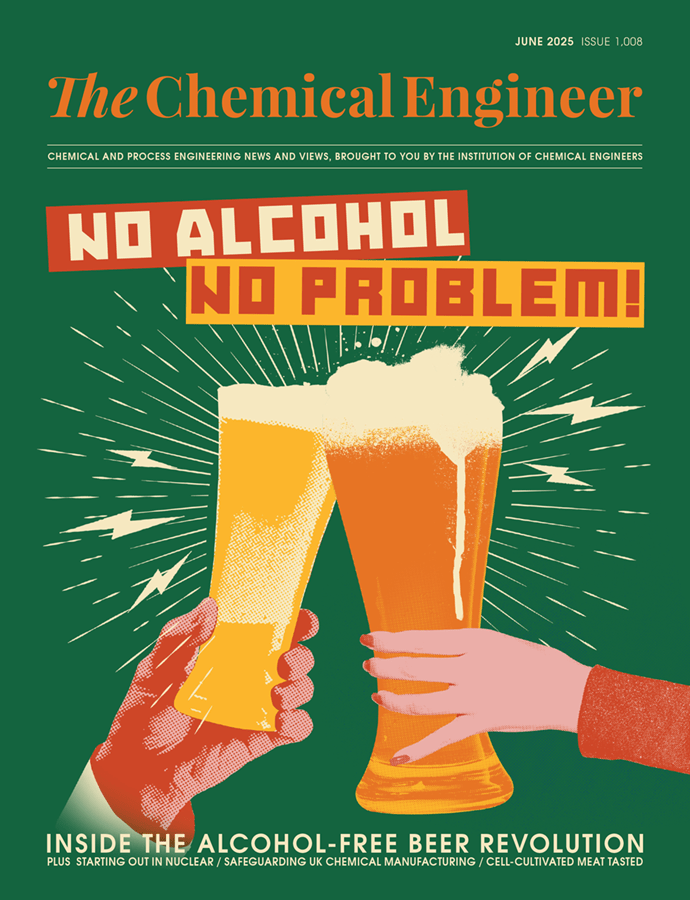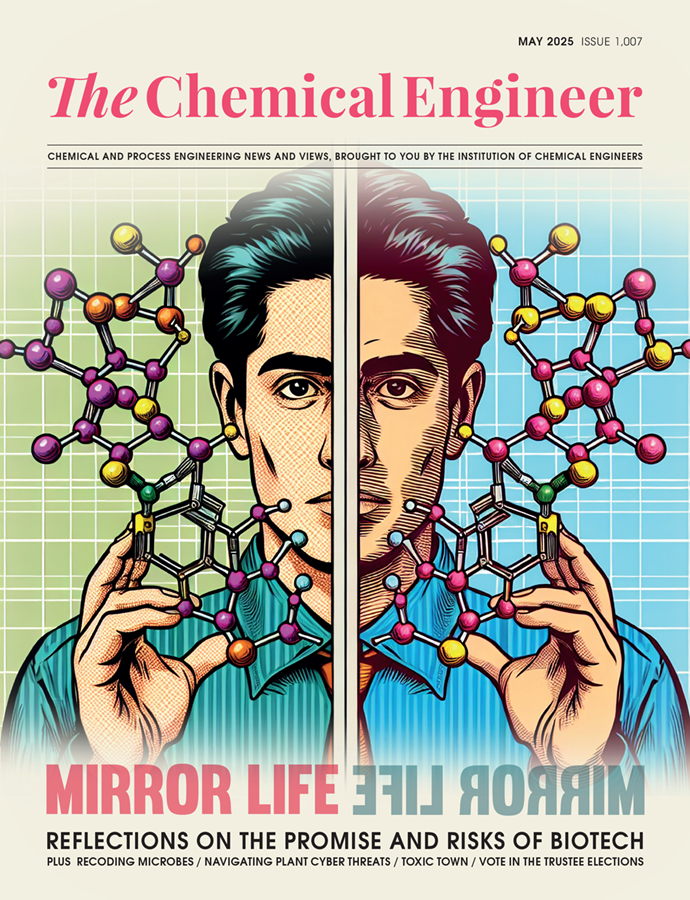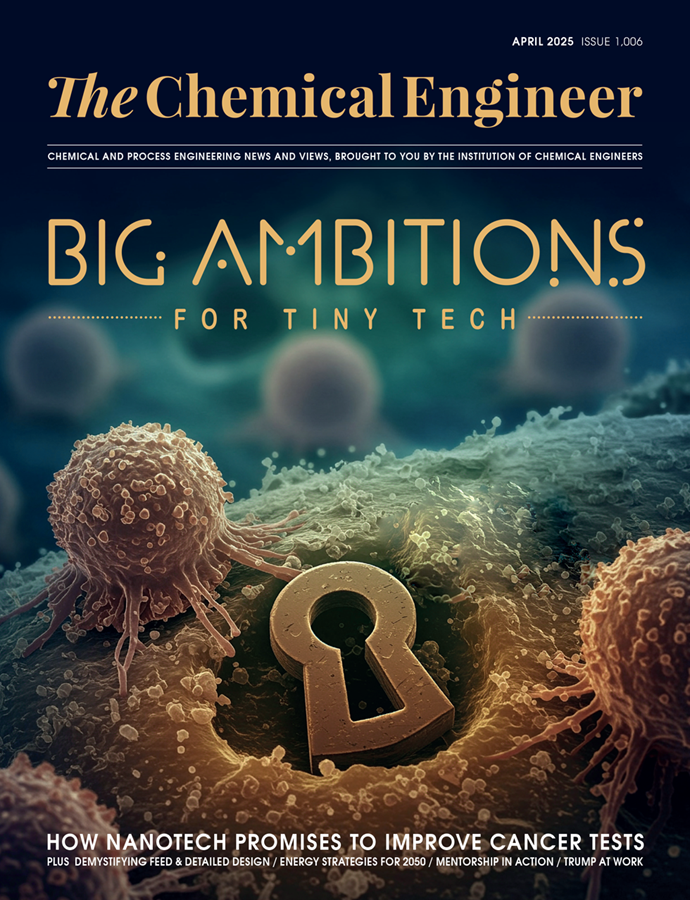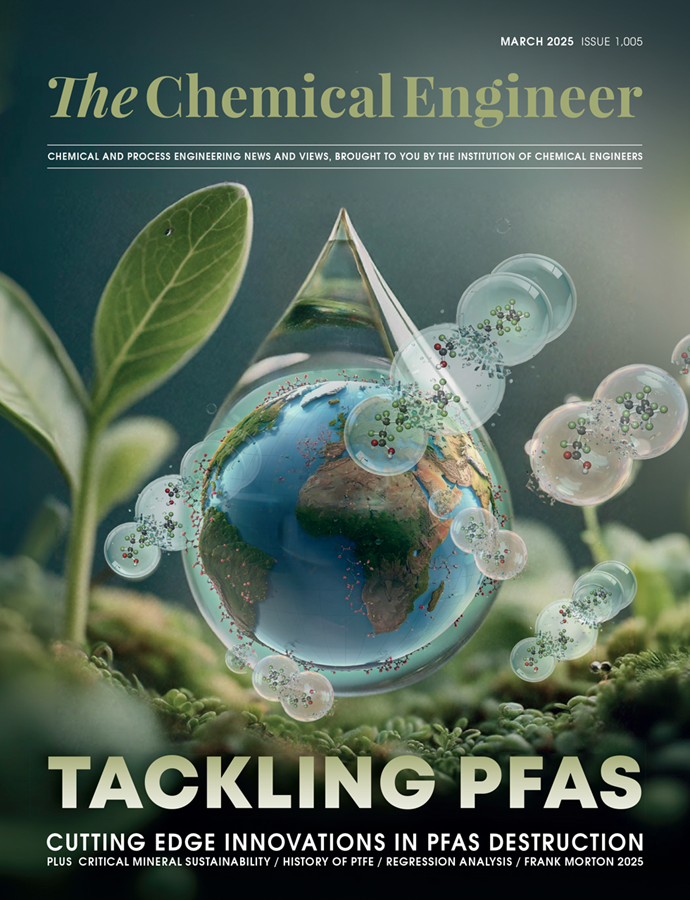Not All Plastics Are Made Equally Recyclable
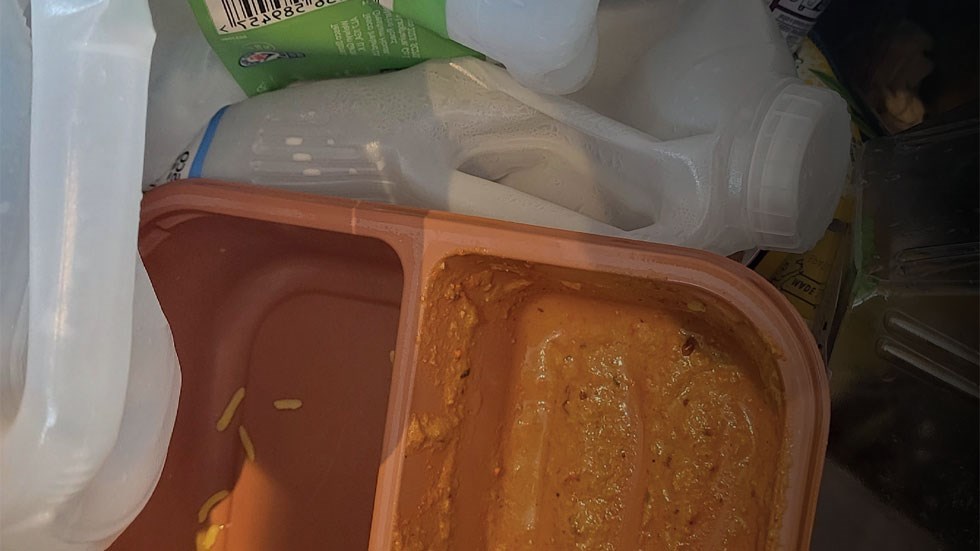
Aniqah Majid looks at the multiple plastics clogging up the waste management system and whether the UK has the infrastructure to get them back into the circular economy
OFFICES, eateries, houses – wherever people gather, waste, specifically plastic waste, accumulates. And while recycling has progressed significantly, with a green box or blue bin usually within arm’s reach, the UK still has a massive plastic waste problem.
Earlier this year, Greenpeace and Everyday Plastic worked with the University of Portsmouth’s Revolution Plastics Institute on the Big Plastic Count, surveying almost a quarter of million people in the UK, from community groups to businesses to schoolchildren.
The survey found that UK households are throwing away an estimated 1.7bn pieces of plastic packaging every week, with only 17% being recycled domestically. It also found fruit and veg, and snack packaging to be the main discarded items, accounting for 697,085 and 699,932 pieces, respectively.
Cressida Bowyer, deputy director of the Revolution Plastics Institute, is clear what needs to be done: “New thinking around packaging choices, backed up by legislation, is urgently needed,” she says. “Implementation of reuse and refill systems could transform the plastics economy from a linear to a more circular model and significantly reduce plastic production and plastic pollution.”
The latest UN Global Plastics Treaty negotiations in April ended in deadlock as member countries, of which there are 175, failed to agree on the process of limiting plastic production.
A member of the treaty, the UK produces around 1.7m t/y of plastic material, mainly in key industrial regions including the North West and West Midlands, according to data published by the British Plastics Federation (BPF). One of the main contributors is packaging, specifically PET (polyethylene terephthalate).
But whether it be PET, HDPE (high-density polyethylene) or polypropylene (PP), you can be sure to find plastics in every UK retail store – and most of it ends up being incinerated.
To understand the difficulties faced in getting it back into the circular economy, I tracked the recycling journey of common plastic waste. And like all epic journeys, I started from the bottom – which in this case was the bin.
UK households are throwing away an estimated 1.7bn pieces of plastic packaging every week
Identifying plastic types by their symbols
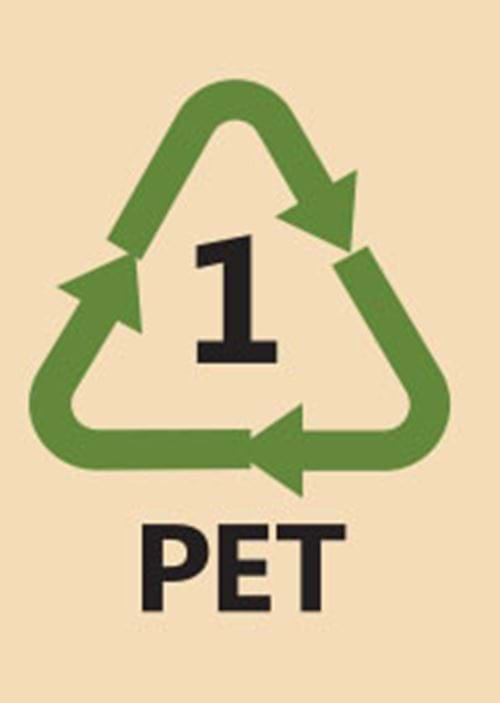
Polyethylene terephthalate (PET/PETE)
This is the most common plastic used in food packaging. Its desirable properties include its high strength, transparency, low absorption rate, and low migration of substances into food. It is because of these properties that it is used widely for plastic beverage bottles, film, and food containers. PET bottles are made by melting PET pellets to high temperatures and injecting them into preform moulds. Once cooled, these preforms are reheated and placed into bottle moulds where compressed air is used to blow them into the final bottle shape. The popularity of PET can be attributed to how widely it can be recycled, commonly through mechanical recycling. In this process, compacted PET bottles are washed to remove residue and grinded to produce flakes These are then sorted to distinguish material and colour, dried and melted to produce pellets, decontaminated to meet food regulation, and finally shipped back to manufacturers to produce new products. PET is 100% recyclable, but not biodegradable or compostable, so if not collected, which around 24% of PET bottles in the UK are not according to the 2023 UK Household Plastic Packaging Collection Survey, it will most likely end up in landfills.
Recyclable? YES
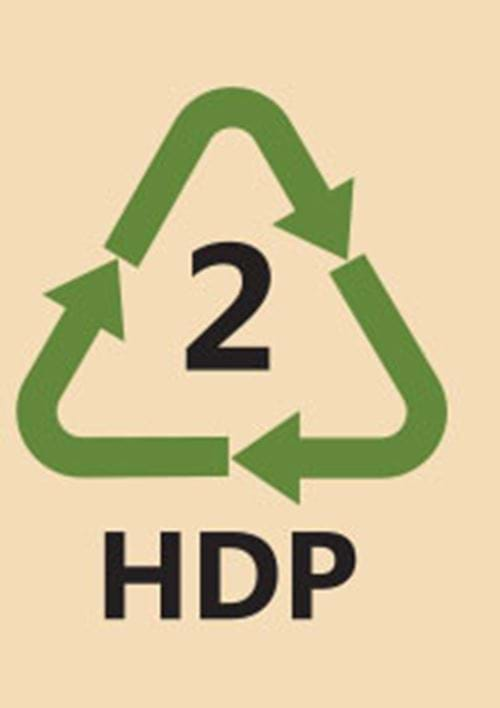
High-density polyethylene (HDPE)
Like PET, HDPE has low moisture absorption and is resistant to chemical corrosion. It is easy to mould and weld into different forms and widely recyclable, with around 79% of milk bottles, which are mostly made with HDPE, being recycled in the UK, according to the BPF. Like PET, HDPE is mostly mechanically recycled via the washing and shredding process. Other uses for HDPE include food preparation boards, chemical tanks, and outdoor furniture. HDPE does have its disadvantages too, including its inability to biodegrade or compost, and its lack of resistance to stress cracking and oxidising acids.
Recyclable? YES
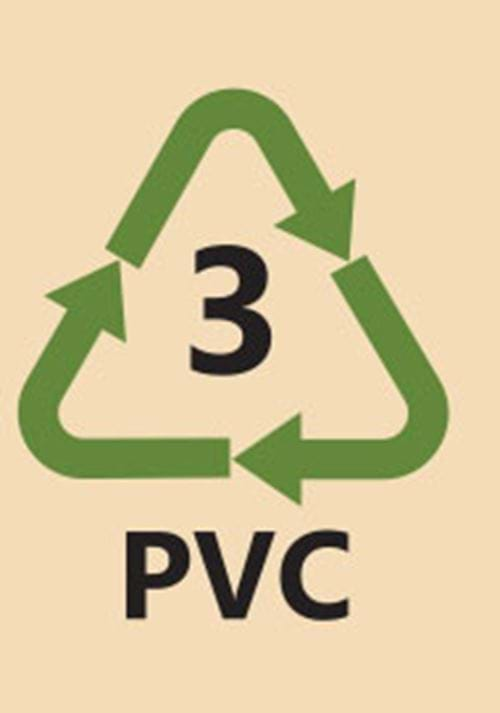
Polyvinyl chloride (PVC)
PVC can be recycled in the UK but not in the same way as PET and HDPE. It is not often accepted by local authorities and must be recycled separately due to its high chlorine content and levels of additives. Apart from cling film, it is rarely used in food packaging. Instead, it is commonly used for drainage pipes, medical devices, and textiles. It can be mechanically recycled and can be collected by commercial recycling services and centres that specialise in PVC recycling.
Recyclable? MOSTLY
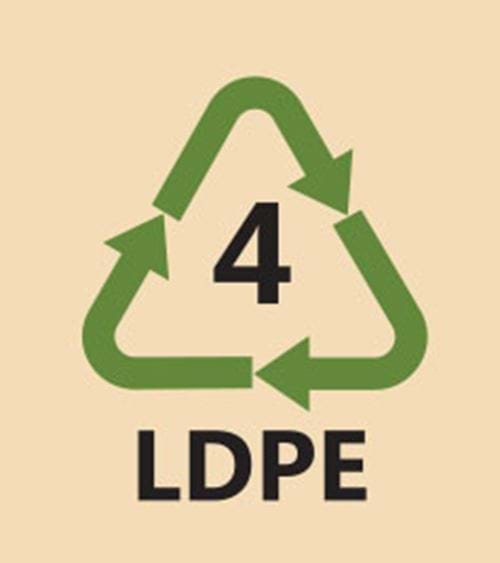
Low-density polyethylene (LDPE)
As the name suggests, LDPE has a lower density than HDPE, making it slightly more malleable but not as strong. It is commonly used for flexible “soft plastics” including film, and bread and shopping bags. It can be recycled, but like PVC, not domestically and only at certain collection points. Its flexibility makes it prone to jamming recycling machinery, and contamination from food, labels, and stickers requires it to be more thoroughly cleaned than other plastics. It can be reprocessed via mechanical recycling into rubbish and compost bins, furniture, and plastic film.
Recyclable? MOSTLY
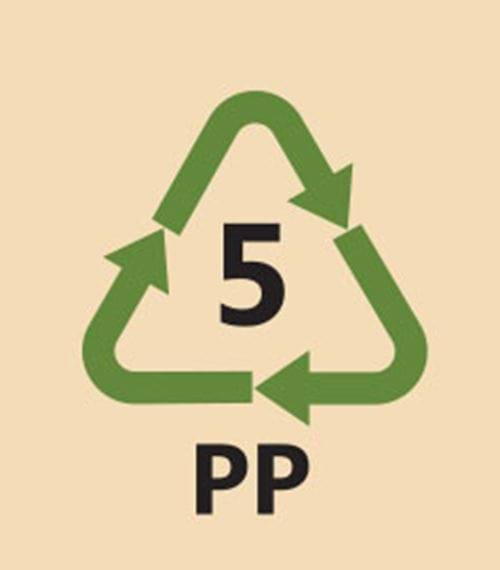
Polypropylene (PP)
PP is widely used for food packaging and is one of the most common types of plastic. It is commercially used for pallets, yoghurt containers, coffee cups, and automotive parts. Like PET, it is strong, semi-rigid, and has good chemical and heat resistance. It does not need to be separately collected and processed from other plastics. However, it does lose its strength as it goes through the recycling process. According to research published in the International Journal of Materials Engineering, recycling PP can cause embrittlement. However, PP can be mixed with new PP to improve the quality of the recycled product.
Recyclable? YES
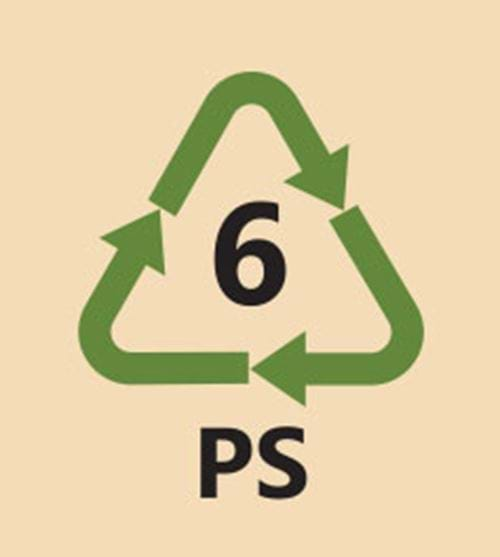
Polystyrene (PS)
Due to its good insulation properties, polystyrene was once widely used in the UK for food takeaway boxes. However, the government banned polystyrene for this use in 2023 as it is not recyclable. It is still commonly used for protective packaging for delicate items and when something needs extra cushioning. Polystyrene is 95% air, so is not cost-effective for waste and recycling authorities to process. It can also be highly contaminated with food, and because it is so porous would be harder than other plastics to clean.
Recyclable?NO
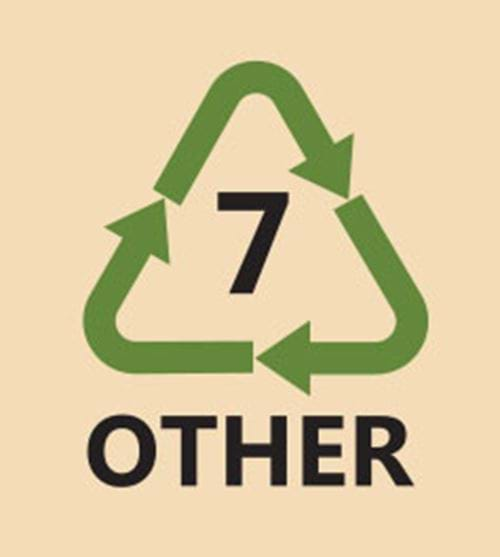
Other
The “other” type is reserved for plastics that do not fit into any of the other categories, like nylon, which is usually made of polyamides, and CDs, which are typically made of polycarbonate.
Recyclable? NO
Most plastic waste is food packaging
So, just after lunchtime, off I went to the kitchen recycling bin in my shared house. The chosen items were all food packaging, which accounts for 81% of the plastic that gets thrown away, according to data published in the Big Plastic Count.
These items were a 2 L semi-skimmed milk carton, a chicken and bacon salad box from Tesco, a chicken tikka ready meal tray, and an Arla yoghurt pot.
Each had various parts of its packaging, including film and cardboard wrapping, missing, and each included some residue from its now digested food contents. Specific recycling instructions were printed on three of them, leaving me to hunt down the cardboard for the ready meal.

Plastics recycling with current UK infrastructure
The milk carton was straightforward enough. Most milk cartons in the UK are made from HDPE, which is widely and easily recycled. It included the most recognisable recycling sign, a circular arrow with a green background, with bold instructions to rinse with the cap on.
The green symbol is found on around 75% of packaging collected by local authorities in the UK. Further instructions like rinse with the cap on are related to sortation needs.
Food residue can contaminate recycling to the point where it can be rejected and diverted to landfills and incineration, costing cash-strapped councils money and resources. Elmbridge Borough Council said it had to reject 298 t of recyclable material in 20232 due to contamination, and according to a BBC report, Medway Council spent £25,000 of additional disposal costs on contaminated plastic.
Antony Buchan, head of programme – local authority support at government body ReLondon, said: “There is still a lot of confusion among residents about what they can recycle, which leads to high levels of contamination from materials that simply cannot be recycled, ruining other materials.”
He added: “We often get ‘wish cycling’ in, where people think – well it should be recyclable, so I’ll put it in. There is an issue that should be taken care of under the Simpler Recycling Reforms where a material will say non-recyclable but will be compostable. But compostable plastics can find themselves in HDPE and PET recycling streams and end up degrading the quality of it.”
The green symbol is found on around 75% of packaging collected by local authorities in the UK
According to recycling service Eureka Recycling, keeping the bottle cap on has another benefit – caps can be too small and light to be correctly recycled on their own, often getting pushed in with other recycling materials like glass and paper and eventually ending up in landfills or incineration.
Similar instructions came with the yoghurt pot, the salad box, and the ready meal tray. For each, the hard plastic part of the packaging, likely made from PET or HDPE, could be domestically recycled, but the film lid could not. The yoghurt pot included a black circular arrow with a line through it.
Plastic lids found on pots and under bottle tops are often not recyclable in the UK because they fall into the flexible “soft” plastics category. Soft plastics are typically made of LDPE or PVC. Unlike hard plastics, little commercial infrastructure has been built in the UK to manage flexibles. They cannot be added to regular recycling streams for PET-related plastics due to the risk they might clog machinery. As found on the instructions for the salad box and the ready meal, the film could only be recycled at supermarkets.
Under the UK’s collection and packaging reforms, however, kerbside collection of flexible plastic packaging will be mandatory from 2027. Though infrastructure for flexibles recycling is not yet established in the UK, waste management company SUEZ has reported promising results from kerbside recycling collection pilots.
The £3m Flexible Plastic Fund (FPF) FlexCollect project was set up in May 2022 and is funded and supported by organisations including Unilever, PepsiCo, and Mars UK. The trial sampled seven local authorities and 30,000 households with initial results showing that 60% of households participated regularly and the average weight of collection bags per household was around 291 g.3 Of the flexibles they collected, SUEZ found 90% to be recyclable, with only 10% too contaminated to process.
These findings show that flexibles have the potential to join PET and HDPE-type plastics in being widely mechanically recycled in the UK. However, a challenge arises with kerbside collection requirements and space, as they still need to be collected and processed separately.
I disposed of my chosen four items as instructed. I put the milk bottle (with the cap on) the yoghurt pot (without the film), the salad box, and the ready meal tray in my blue domestic recycling bin, which is collected kerbside every Tuesday.
Luckily, I had fished the items out of the bin without any film or flexible parts attached. However, if I were to have disposed of these, the obstacle would have been one of convenience. The largest supermarket with a recycling collection point is close to three miles away and involves a bus journey and a walk. Though I know film and flexibles can be recycled, I would most likely have put these items in a general waste bin.
Responding to this, Buchan said: “Currently kerbside collection is widely offered by many local authorities for bottles, pots and trays. But in some places, that service provision is better and more comprehensive than others. If you live in a house with a kerbside collection, great. But if you live in a different property type, it is often more challenging.”
He added: “A flat is the most challenging environment of all, or if you live in a flat above a shop where you’re sharing the public realm with a multitude of other users and businesses – the highway is not a great place to be offering collection services.”
Buchan said that people who live in flats, specifically flats above shops, tend to have the worst recycling habits due to the lack of space they have to keep multiple recycling bins, and the fact that most renters in London change address frequently and do not have a fixed recycling system. As if to illustrate this, by the end of August, I will have moved four times in a year.
Though infrastructure for flexibles recycling is not yet established in the UK, waste management company SUEZ has reported promising results from kerbside recycling collection pilots
A chemical supplement to mechanical recycling
The most common challenge that comes with “hard-to-recycle” plastics is processing. Soft flexible plastics can be recycled, but the majority of local authorities in the UK do not have the infrastructure to support it, and finding a service that can takes time and money.
Chemical, or advanced, recycling is a group of emerging technologies filling the gap left by mechanical processing, particularly in mainland Europe. These techniques, which include pyrolysis, hydrocracking, gasification, and depolymerisation, involve changing the chemical structure of waste plastics and converting them back into base chemicals and chemical feedstock.
Helen Jordan, sustainability manager at the BPF, said: “In terms of chemical recycling, we’re very much of the view that it works alongside mechanical. So, it’s a complementary technology, that will allow the recycling of materials that we can’t recycle at the moment.”
She added: “Chemical recycling is really there for contaminated and hard-to-recycle materials that at the moment are having to go into energy-from-waste or landfill because we can’t mechanically recycle them.”
Of these, pyrolysis is the thermal process with the most advanced technology and investment. Using high temperatures, polymers are converted into simpler molecules, including hydrocarbons and syngas, which can be used to make feedstock. This can then be used by petrochemical companies to make new products.
European chemicals manufacturer BASF launched its ChemCycling project in 2018, using pyrolysis to chemically recycle plastic waste and end-of-life tyres. The company is working with partners who develop pyrolysis oil feedstock from plastic waste which BASF can put back into its value chain.
Birgit Hellmann, communications lead on ChemCycling and renewable carbon at BASF, explained: “So instead of using naphtha and other fossil feedstock, we feed in pyrolysis oil as a drop-in solution additionally to the fossil feedstock.”
She added: “Pyrolysis is an extremely efficient process. It has a yield of about 70%, which means that around 70% of the plastic waste can be converted into secondary raw materials. We expect further improvements in efficiency within the next ten years.
“It is also an energy efficient process, where plastic waste that cannot be converted into oil can be converted into gas and this gas is then used to generate energy required for the process, making external thermal energy demand very low.”
BASF uses its pyrolysis oil feedstock at its Verbund site in Germany. It has six operational sites across the world to develop new products under the name Ccycled. These have been used in the food packaging industry, as well as in automotives, medical equipment, and textiles.
Pyrolysis oil is ideal for recycling PP and polystyrene according to the BPF. Depolymerisation, which involves breaking polymers down to “virgin-like” monomers is suitable for recycling PET as it is a condensation polymer. Hydrothermal treatment involves breaking down polymers into hydrocarbons which are then passed through a reactor, depressurised, and flash-distilled across a range of boiling points.
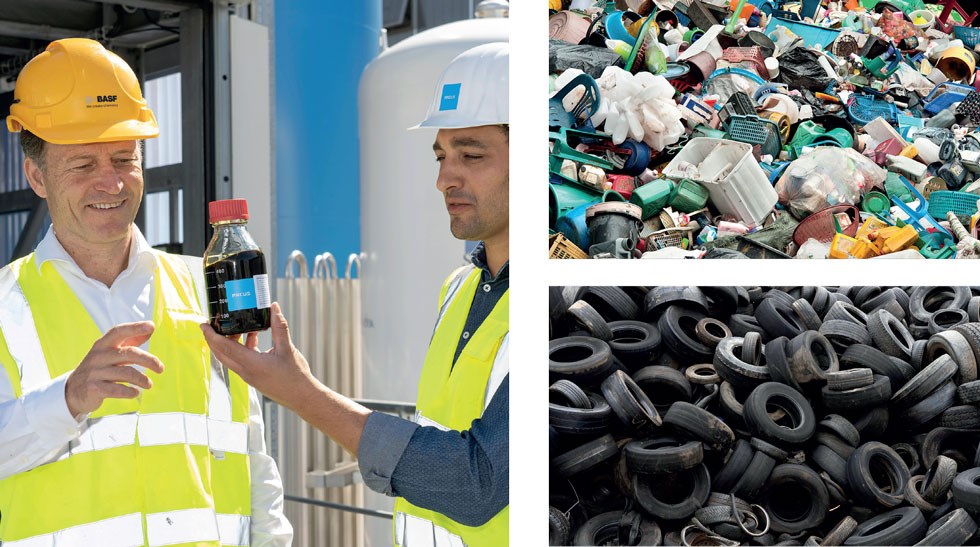
Mass balancing act
Russia’s 2022 invasion of Ukraine created a volatile natural gas market, a feedstock which BASF heavily relied on to develop its products.
To tackle the problem, the company began to rely more on renewable feedstock sources, using a mass balance approach for feedstock substitution with its ChemCycling project to grow a customer-driven market for raw materials, including waste plastic.
A mass balance approach is a chain of custody model used by industries to track materials through a complex value chain. It enables recycled or sustainable inputs which are mixed with virgin material during the process to be allocated to particular outputs.
The UK is behind Europe on using the mass balance approach in plastics recycling, though UK HM Revenue & Customs is currently considering whether the approach might be the best way of determining the amount of chemically recycled plastic in a packaging component.
In 2022, the UK introduced the Plastic Packaging Tax (PPT) to encourage businesses to source plastic packaging that had a minimum of 30% of recycled content. Both mechanically and chemically recycled material can contribute to meeting the requirement. However, the way that chemical recycling is sometimes carried out means that it is not always possible to determine the actual amount of recycled material in a specific output from the process.
Jordan said: “[PPT] doesn’t allow for mass balance. And without the mass balance, the numbers you’re ending up with are so tiny that it’s not important enough to make somebody really keen to invest in chemical recycling.”
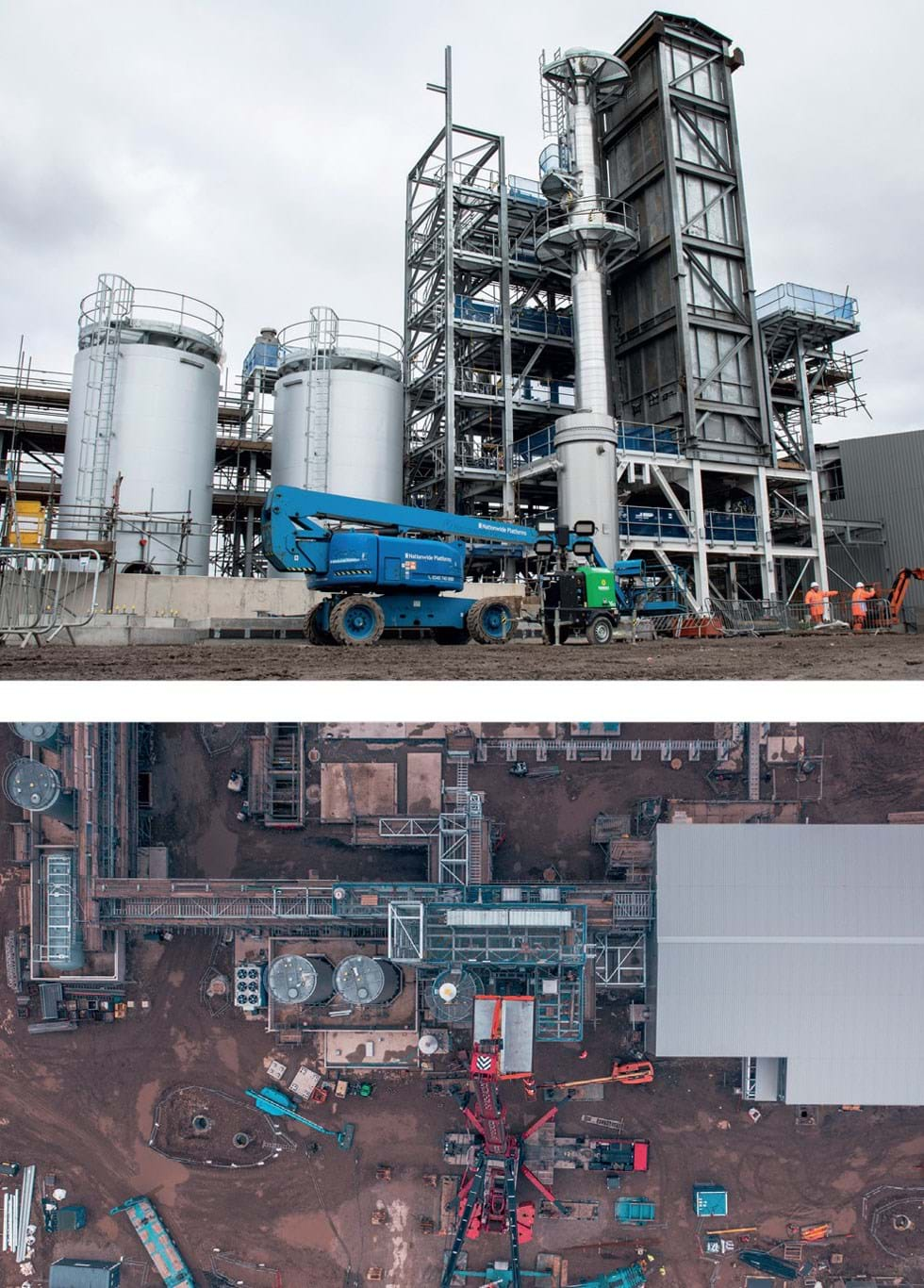
Chemical recycling innovation in the UK
Mura Technology has developed a hydrothermal treatment it calls HydroPRS to take on highly contaminated and hard-to-recycle plastics and convert them into virgin-grade products.
A Mura spokesperson said: “Our Hydro-PRT process is already proven to be effective at recycling mixed plastic waste streams, which can include contaminated, post-use flexible and rigid packaging and laminated and metallised film. These materials normally are sent for incineration, so we see Hydro-PRT being complimentary to the established mechanical recycling systems.”
They added: “Our feedstock suppliers, which for the Wilton facility include Geminor and Elite Recycling Solutions, only supply Mura with pre-specified plastic waste streams that Mura’s process, Hydro-PRT, is capable of processing, including PE and polystyrene. To ensure a higher content of target materials entering the Hydro-PRT process for conversion, the Wilton facility includes a front-end sorting stage to remove unwanted contaminants such as metal, glass and grit, alongside utilising near infrared to remove small amounts of non-target plastics, such as PVC.”
The company is currently gearing up to open its first commercial-scale HydroPRS plant in Teesside, UK. It has the capacity to produce 20,000 t/y of recycled liquid hydrocarbon products, with Mura making provisions to triple production.
The UK comes second only to the US in the production of plastic waste per person, according to the Big Plastic Count survey, and more than half of that is incinerated.
However, as I have learned from my own recycling journey, getting plastics back into the circular economy is as much reliant on our own recycling habits and processes as it is mechanical and chemical processes.
References
1. https://thebigplasticcount.com/
2. https://bit.ly/3VVX9u7
3. https://bit.ly/3xEUCfN
4. https://bit.ly/3xQYXfQ
Recent Editions
Catch up on the latest news, views and jobs from The Chemical Engineer. Below are the four latest issues. View a wider selection of the archive from within the Magazine section of this site.

